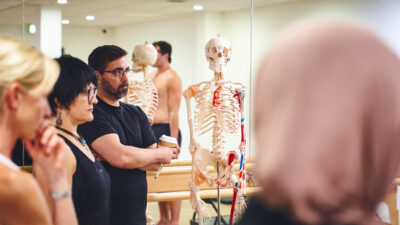



If you search for “biomechanics,” you’ll mostly find information related to sports and performance. However, understanding biomechanics—both extrinsically and intrinsically—can significantly enhance the overall health and wellbeing of clients for movement/exercise coaches and trainers.
According to the World Health Organization, “Health is a state of complete physical, mental, and social well-being, not merely the absence of disease or infirmity.”
Health and wellbeing often involve maintaining happiness, being free from symptoms, and feeling robust and purposeful. While this blog focuses on the physical aspect of biomechanics, it also explores how biomechanics can influence mindset and psychology.
In simple terms, three key subsystems enable us to move freely and with less pain:
Note: The biotensegrity model (Prof. Steve Levit) suggests that the human body is more sophisticated than a machine, though a simplified biomechanical model is useful for understanding and applying human movement.
Karel Lewitt, the “father of manual medicine,” proposed that we are born with genetic movement codes and develop conditioned movement codes as we grow. While repeating certain movements can enhance performance and coordination, over time, these compensatory factors can negatively impact our subsystems. For instance, a sedentary lifestyle can lead to tissue adaptation and asymmetries, affecting overall movement and health.
Example 1: Older Adults
For older adults (60+), maintaining joint mobility is crucial for balance and independence. The iMoveFreely program focuses on low-range joint mobility and low-level muscle energy techniques, making it a safe and effective prehabilitation program for this demographic.
Movement offers protection and health benefits, especially for those with long-term conditions like diabetes, obesity, and arthritis. Understanding how these conditions impact movement can help practitioners design effective programs, such as the iMoveFreely program, which can be done at home and doesn’t require specific equipment.
Qualified practitioners who understand intrinsic biomechanics and behavior change can provide valuable support in managing these conditions through movement and exercise.
Extrinsic biomechanics often focuses on improving sports performance through video analysis and data interpretation. However, understanding intrinsic biomechanics is essential for optimizing performance without compromising the athlete’s natural genetic makeup. For instance, correcting movements to appear more aesthetically pleasing may not align with the athlete’s intrinsic biomechanics and could cause problems.
Understanding intrinsic biomechanics benefits every client demographic, enhancing health and wellbeing across various sectors. This knowledge fills the gap between health and fitness, wellness and clinical practice, and exercise and medication.
Investing in our Diploma in Biomechanics Coaching can kickstart your career journey, supported by a community of practitioners dedicated to improving client outcomes. Contact us to learn more and reserve your place in our popular program.
Contact Us:
Email: rachel@biomechanicseducation.com
Phone: 020 3841 6151
Start your journey today and transform your approach to health and wellbeing!